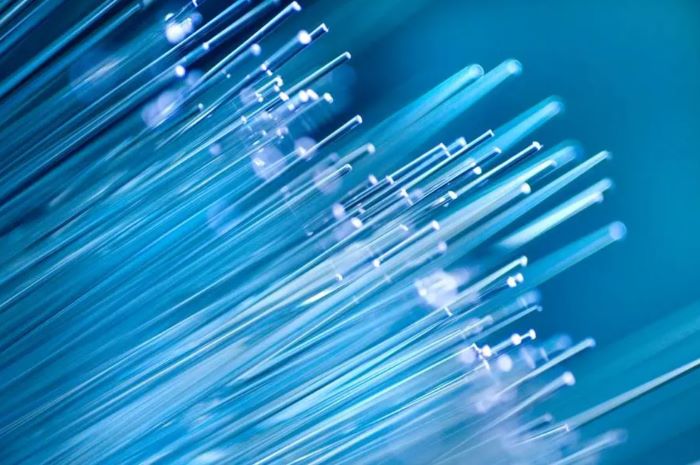|
Designing and deploying FTTx networks requires careful consideration of several key factors, such as network topology, fiber optic cable selection, deployment costs, regulatory compliance, and maintenance and support. In this article, we will explore the critical design considerations and best practices for FTTx architecture, to help network planners and operators build efficient and reliable fiber networks. We will examine different FTTx deployment scenarios and the unique challenges and opportunities associated with each, and provide insights into the latest technologies and innovations shaping the FTTx landscape. FTTx Architecture Components The technology architecture components of FTTx typically include the following:
Overall, these technology architecture components work together to create a high-speed and reliable FTTx network that can deliver high-quality broadband services to end-users. Key Design ConsiderationsWhen designing an FTTx network, there are several key considerations that must be taken into account to ensure the network is efficient, reliable, and cost-effective. These considerations include:
Overall, designing an FTTx network requires careful consideration of various factors to ensure that the network is efficient, reliable, and cost-effective. Proper planning and execution can help service providers to provide high-quality broadband services to end-users while optimizing their return on investment. Summary
FTTx architecture and design considerations are crucial for building efficient and reliable fiber networks to meet the ever-growing demand for high-speed and reliable internet connectivity. A well-designed FTTx network requires careful consideration of network topology, fiber optic cable selection, deployment costs, regulatory compliance, and maintenance and support. Understanding the unique challenges and opportunities associated with different FTTx deployment scenarios is key to building successful FTTx networks. By leveraging the latest technologies and innovations, network planners and operators can design and deploy FTTx networks that are efficient, reliable, and scalable to meet the demands of today's digital economy. With the continued growth of the internet and digital technologies, FTTx architecture and design considerations will remain critical components in building the infrastructure for a connected future.
6 Comments
19/12/2024 00:40:59
The article on FTTx Network Architecture from Quantum Fields outlines the importance of Fiber to the x (FTTx) in modern networking. It highlights how this architecture supports high-speed internet by utilizing fiber-optic cables and can be configured in different types, such as FTTH (Fiber to the Home), FTTC (Fiber to the Curb), and FTTP (Fiber to the Premises). FTTx enhances network efficiency and scalability, offering faster internet speeds and greater bandwidth compared to traditional copper-based systems.
Reply
23/12/2024 20:48:44
FTTx (Fiber to the x) network architecture refers to a fiber optic communication system that delivers high-speed internet to various endpoints. These networks typically include Fiber to the Home (FTTH), Fiber to the Building (FTTB), and Fiber to the Curb (FTTC), with the fiber optic cable extending to the last point before the customer’s premises. FTTx solutions provide significant advantages in terms of bandwidth and scalability, supporting the increasing demand for fast and reliable internet connections.
Reply
27/12/2024 16:11:21
An excellent breakdown of FTTx network architecture and its vital role in modern connectivity! The detailed explanation of components like the OLT, ODN, and PON, along with key design considerations such as network topology and power management, makes this a valuable resource for network planners. It’s great to see such a comprehensive approach to designing efficient and scalable fiber networks. Thanks for sharing these insights!
Reply
3/1/2025 19:54:29
The article on FTTx Network Architecture discusses the importance of fiber-optic technologies for modern broadband services. It explains the components of FTTx, including Optical Line Terminals (OLT), Optical Distribution Networks (ODN), and Optical Network Terminals (ONT), while outlining design considerations like coverage, capacity, fiber route planning, and power management. The article highlights how these networks support high-speed and scalable internet, crucial for meeting growing data demands.
Reply
6/1/2025 17:25:29
The article discusses FTTX (Fiber-to-the-x) network architecture, focusing on the different configurations such as FTTH (Fiber-to-the-home), FTTC (Fiber-to-the-cabinet), and FTTN (Fiber-to-the-node). It explains the advantages of fiber optic networks, including high-speed connectivity, scalability, and long-term reliability for both urban and rural deployments. The article also touches on the importance of proper design and installation for optimal network performance.
Reply
25/3/2025 16:25:40
This article provides an informative overview of FTTx network architecture, explaining its role in delivering high-speed fiber-optic connectivity. The breakdown of different FTTx types helps in understanding their applications for businesses and residential areas. It would be helpful to include more details on deployment challenges, cost considerations, or emerging trends in fiber network expansion. Overall, a great resource for those interested in fiber-optic infrastructure and networking solutions!
Reply
Leave a Reply. |
AuthorTim Hardwick is a Strategy & Transformation Consultant specialising in Technology Strategy & Enterprise Architecture ArchivesCategories
All
|


